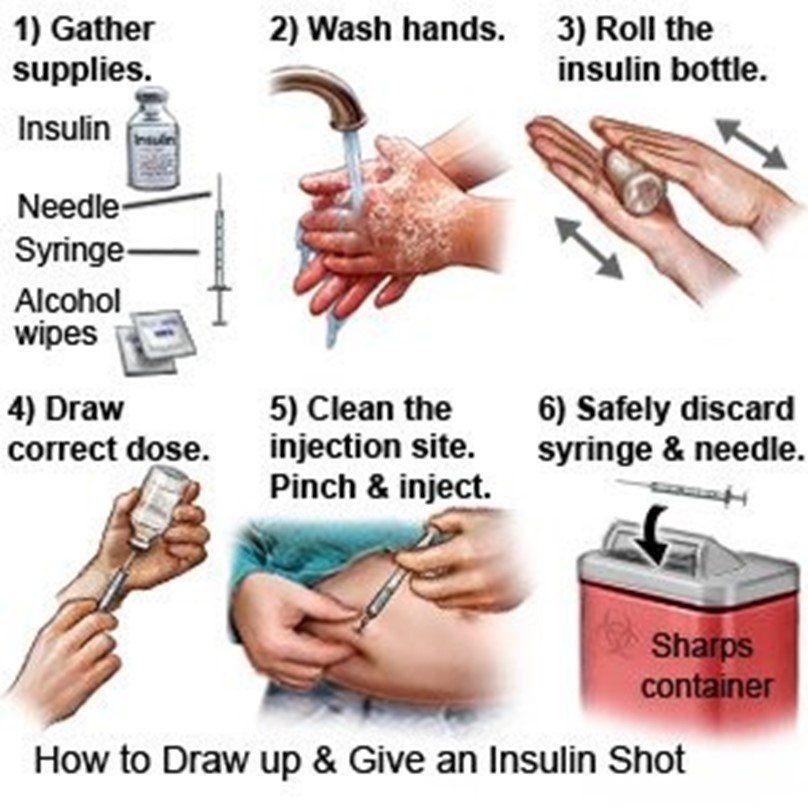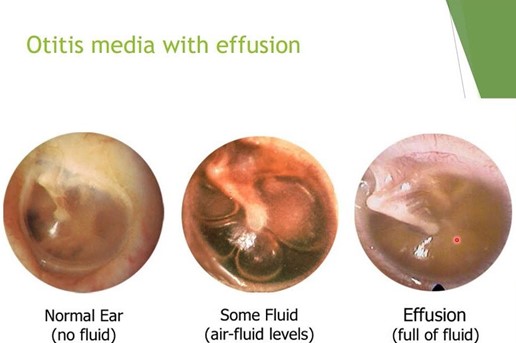A nurse is providing teaching about self-administration of insulin to the parent of a school-age child who has a new diagnosis of diabetes mellitus. Which of the following statements by the parent indicates a need for further teaching?
"The insulin can be injected anywhere there is adipose tissue."
"I will be sure my child rotates sites after 5 injections in one area."
"I will be sure my child aspirates before injecting the insulin."
"The insulin should be injected at a 90-degree angle."
The Correct Answer is C
Choice A: This statement does not indicate a need for further teaching, as it is correct that insulin can be injected anywhere there is adipose tissue. Adipose tissue is the layer of fat under the skin that can absorb insulin and prevent damage to muscles or organs. The common sites for insulin injection are the abdomen, thighs, buttocks, or upper arms.
Choice B: This statement does not indicate a need for further teaching, as it is correct that the child should rotate sites after 5 injections in one area. Rotating sites can prevent lipodystrophy, which is a condition that causes abnormal changes in fat tissue due to repeated injections. Lipodystrophy can affect the appearance and absorption of insulin in the affected area.
Choice C: This statement indicates a need for further teaching, as it is incorrect that the child should aspirate before injecting the insulin. Aspiration is the process of pulling back on the plunger of the syringe to check for blood before injecting the medication. Aspiration is not recommended for insulin injection, as it can cause pain, bruising, or leakage of insulin from the injection site.
Choice D: This statement does not indicate a need for further teaching, as it is correct that insulin should be injected at a 90-degree angle. Injecting insulin at a 90-degree angle can ensure that the medication reaches the adipose tissue and prevents skin irritation or muscle damage. The only exception is if the child has very thin skin or uses very short needles, in which case they may inject at a 45-degree angle.

Nursing Test Bank
Naxlex Comprehensive Predictor Exams
Related Questions
Correct Answer is C
Explanation
Choice A: A popping sensation when swallowing is not a sign of a tympanic membrane rupture, as it is a normal phenomenon that occurs when the eustachian tube opens and closes to equalize the pressure between the middle ear and the atmosphere. A popping sensation when swallowing may be associated with otitis media with effusion, which is a condition that causes fluid accumulation behind the eardrum, but it does not indicate a rupture.
Choice B: Green-blue discharge could be indicative of infection but is not as directly related to the rupture event as the sudden pain relief is.
Choice C: The correct answer is sudden relief of pain. This is because the rupture of the tympanic membrane releases the pressure and fluid that has built up in the middle ear, leading to an immediate decrease in pain.
Choice D: An increased temperature is not a sign of a tympanic membrane rupture, as it is a nonspecific symptom that may indicate various conditions, such as inflammation, infection, or fever. An increased temperature may be associated with otitis media with effusion, which is a condition that causes fluid accumulation behind the eardrum, but it does not indicate a rupture.

Correct Answer is C
Explanation
Choice A reason: This choice is incorrect because a 1-year-old toddler who has roseola and a temperature of 39° C (102.2° F) is not the most urgent case to assess. Roseola is a viral infection that causes a rash on the trunk and limbs, followed by a high fever that lasts for several days. It usually affects infants and young children and is self-limiting.
The fever can be managed by giving antipyretics such as acetaminophen or ibuprofen, and by providing fluids and comfort measures. The fever does not indicate any serious complication or threat to life.
Choice B reason: This choice is incorrect because a 4-year-old child who has asthma and an O2 sat of 97% is not the most urgent case to assess. Asthma is a chronic respiratory condition that causes inflammation and narrowing of the airways, leading to wheezing, coughing, chest tightness, or shortness of breath. It may be triggered by allergens, irritants, exercise, or infections. The O2 sat is a measure of oxygen saturation in the blood, which indicates how well oxygen is delivered to the tissues. A normal O2 sat range is 95% to 100%, so an O2 sat of 97% indicates that the child has adequate oxygenation and is not in respiratory distress.
Choice C reason: This choice is correct because a 10-year-old child who has sickle cell anemia and reports severe chest pain is the most urgent case to assess. Sickle cell anemia is a genetic disorder that causes the red blood cells to become sickle-shaped and clump together, blocking the blood flow and oxygen delivery to the organs and tissues. It may cause severe pain in the chest, abdomen, joints, or bones, as well as symptoms such as pallor, jaundice, fatigue, or shortness of breath. Severe chest pain may indicate acute chest syndrome, which is a life-threatening complication of sickle cell anemia that involves infection or infarction of the lungs. It may cause fever, cough, hypoxia, or respiratory failure. Therefore, assessing and treating this child is a priority to prevent further damage and death.
Choice D reason: This choice is incorrect because a 7-year-old child who has diabetes insipidus and a urine specific gravity of 1.016 is not the most urgent case to assess. Diabetes insipidus is a rare disorder that affects the balance of fluids in the body. It causes the kidneys to produce large amounts of dilute urine, leading to polyuria, polydipsia, dehydration, or electrolyte imbalance. It may be caused by a deficiency of antidiuretic hormone (ADH) or a resistance to its action. The urine specific gravity is a measure of urine concentration, which indicates how well the kidneys are functioning. A normal urine specific gravity range is 1.005 to 1.030, so a urine specific gravity of 1.016 indicates that the child has normal urine concentration and is not dehydrated.
Whether you are a student looking to ace your exams or a practicing nurse seeking to enhance your expertise , our nursing education contents will empower you with the confidence and competence to make a difference in the lives of patients and become a respected leader in the healthcare field.
Visit Naxlex, invest in your future and unlock endless possibilities with our unparalleled nursing education contents today
Report Wrong Answer on the Current Question
Do you disagree with the answer? If yes, what is your expected answer? Explain.
Kindly be descriptive with the issue you are facing.
